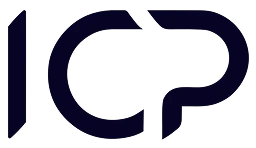Agile project management in 2022
Agile project management is a very popular approach to projects, gaining ground and support every year.

Tell our team about your needs and we will customize the tool as part of your chosen package!
Agile project management is a very popular approach to projects, gaining ground and support every year. Agile, Scrum, Kanban – these are all terms always associated with the notion of agility in project management systems and task management tools. And this is a very good association. What is agile project management, anyway? How can we use it in our day-to-day business affairs and how can we implement agility in our enterprise?
What is agile project management?
Agile project management is an iterative and incremental approach to managing projects. Projects in agile management are typically characterized by short development cycles, close collaboration between team members, and a focus on delivering value to the customer. The method of agile project management was first developed in the software industry, but it has since been adopted in a variety of other industries.Agile project management is often compared with traditional project management. The style of agile management is considered to be less rigid and bureaucratic, more agile and responsive to change, while traditional project management is more focused on planning and control. While there are benefits to both approaches, agile project management is generally considered to be more beneficial for projects that are subject to frequent change or uncertainty.
Agile project management methodology
Agile project management methodology is a process that helps organizations manage projects in a more agile way. The agile approach emphasizes collaboration, flexibility, and customer involvement throughout the project lifecycle. In addition, the agile workflow can help to improve communication and collaboration among team members and increase customer satisfaction.Unlike traditional methods, which are often linear and inflexible, agile processes harness change. As a result, they have become well-suited for today’s fast-paced, ever-changing business environment.There are a variety of agile project management methodologies that can be used, depending on the specific needs of the project. The most common agile methodology is Scrum, which is based on a team-based approach. In Scrum teams, each team member has a specific role to play and is responsible for completing tasks within a set timeframe. Other popular agile methodologies include Kanban and Lean.
Agile project management certification
Agile project management certification is designed for project managers who want to learn how to apply agile project management practices to their work. The certification program covers topics such as Scrum methodology, product backlogs, and sprint planning.Successful implementation of agile project management methodology requires that all team members are properly trained in the chosen methodology. With proper training, self-organizing teams can quickly develop close collaboration and communication.Upon completion of the certification program, project managers will be able to apply agile principles to their work to improve project efficiency and effectiveness. In addition, project managers who are certified in agile project management will be better positioned to lead agile teams and deliver successful projects.
Waterfall vs agile project management
The agile methodology approach to projects emerged as a response to the need for better and more efficient project management. Market changes, changing client needs, and, most importantly, the ever-increasing demand for new software development projects, had a significant impact on project management. The systems created in the former Waterfall approach proved unprofitable to enterprises.The Waterfall model involves full project control — from its beginning, through its intermediate stages, to the delivery of the project to the client. It is a structural approach that requires the right breakdown of the project, determination of resources, a schedule, or potential other additional aspects. Even before the program entered production, many projects were completed using the Waterfall methodology. The project closure resulted in lesser financial gains for the organization since the development team efforts to schedule and prepare projects were not properly used. Moreover, the waterfall model emphasized strict control of the entire project, which led to the artificial extension of the entire process. A new software project would frequently take several years to complete, from planning to production to release. The lengthy development process was to be avoided because the IT market and technology are constantly evolving and the program could not be outdated when it was released. This led project management experts to look for a more efficient way to manage projects.Numerous interesting solutions and scientific articles were published from 1994 to 2001. The beginning of this century brought the Manifesto for Agile Software Development. Commonly known as the Agile Manifesto, it is a collection of all the principles and guidelines for agile project management. At present, agile practices are mostly associated with Agile, but we cannot forget about Scrum (often equated with Agile, even though there are several differences) or the popular Kanban.
Agile project management with scrum
Scrum is one of the most popular agile project management methods, and it helps to ensure that projects are delivered on time and within budget. The Scrum process is divided into sprints, or iterations, each of which has a specific goal. At the beginning of each sprint, the development team plans which tasks need to be completed. During the sprint, team members work together to complete the tasks and produce a working software product. At the end of the sprint, the product is demoed to the customer, and feedback is collected. This feedback is then used to plan for the next sprint. By following this iterative process, agile teams can deliver valuable software products that meet customer needs.Agile project management with Scrum is a process that helps organizations manage projects in an agile way. agile project management methods are based on the Agile Manifesto, which advocates for adaptive planning, early and continuous delivery, constant feedback, and close collaboration between stakeholders.To implement agile project management with Scrum, organizations need to have a clear understanding of the Agile Manifesto and its principles. They also need to have a team of skilled professionals who are familiar with agile methodology and can help guide the organization through the agile process.
How does agile project management work?
As part of the publication of the Agile Manifesto in 2001, four key assumptions and values were formulated at the outset:
- People and interactions first, processes and tools second.
- Functioning software over comprehensive documentation.
- Cooperation with clients first, official arrangements and negotiations second.
- Ongoing response to changes first, implementation of the assumed plan second.
To put it more traditionally, agile project management methodologies demonstrate a flexible approach to principles, plans, processes, or any other arrangements. It is an agile approach based on making quick and ad hoc decisions. Agile emphasizes communication and soft skills much more. It is the team developing the software that makes decisions, delegates tasks to its members, or determines how to execute them. There are no rules that cannot be touched when changes are needed – everything unfolds during a meeting or conversation. If variables are required, in Agile, they have introduced them right away.In practice, Agile assumes that we cannot plan and determine all project-related actions at the start, so it relies on work divided into short cycles. In most cases, cycles in agile projects are called sprints, which last from 1 to 4 weeks. During every sprint, the team prepares a part of the software and, thus, assembles the entire system into one whole. As a result, you can communicate with your client much more efficiently, arrange certain variables on an ongoing basis, and push forward with the project with pretty great force.Let us remember that in the Agile model, it is the team that is the key aspect of work on the given sprint. It is the team members who distribute tasks among themselves and, importantly, have the proper competencies to work in the given field. Therefore, they are the software and identify strongly with it. It is not only another ordinary task to be done in a project; it is creating the entire step-by-step to then put all those components into one whole. It is conducive to the motivation of employees and their eagerness to work every day as they feel an actual part of the entire project—they have a real impact on what the entire system will look like. The employee's motivation and values are what make agile project management stand out.
Waterfall vs. Agile: an example to understand the key differences between traditional and agile project management.
When developing software in the Waterfall model, the project team focuses on the entire project from the very beginning and, thus, differentiates several basic stages. In most cases, these are:
- System planning: from A to Z, the entire system must be planned at the start
- System analysis – e.g., analysis of requirements and an implementation plan
- System design—elaboration on all individual structures
- Implementation – production, i.e., code creation
- Testing is a testing process regarding every element of the system
- System deployment – supplying the client with the full product
The creation of software is largely reliant on a pre-made framework that has been planned out in advance. If a phase does not produce a good result, the team must go back and improve the earlier components. The Waterfall methodology as a whole is less flexible, does not account for dynamic changes during project implementation, and takes longer than Agile.In Agile, the plan is less detailed from the outset. Of course, the team members establish the fundamental hypotheses, anticipated operations, and system functioning at the outset; they specify the prerequisites for project initiation but do not rely on any particular structure. A capable team is tasked with beginning work on the full program if project commencement is begun.It is the team that determines what small steps – the sprints described above for Agile – to take to deliver the whole. Each sprint pertains to different tasks to be done for the sustainable development of the software. A sprint takes a short period – usually a minimum of one week and a maximum of one month. Every sprint has a number assigned (and a name referring to the topic of the work performed). The Agile workflow commonly involves regular and cyclic meetings at which the team discusses the tasks completed during the sprint and specifies what they will work on now, usually during the next sprint. This way, the entire software is created from small blocks, which are then combined into one whole. The team is the key aspect of the entire project in Agile; the team members are the project – they make decisions, determine tasks and complete them.We have surely repeated a lot of information when describing the waterfall and agile methodologies, but we wanted to show the key differences and, to an extent, compare the two most common approaches to projects – Agile and Waterfall. We are certain that you will no longer have any problems with defining those key project-related differences.
Agile vs. Scrum: Is there a difference or are they similar?
This is a great question and, frankly, we will not spend a lot of time explaining it all here. Scrum and Agile are very similar topics, falling within the agile project management approach. In short, Agile projects are approached iteratively – you complete a part of your project, review it, respond, conclude, and proceed to further tasks. In this case, you introduce variables on an ongoing basis, so there is no key plan here: you just work – as the name suggests – in an agile manner. Agile is an approach to project management, and Scrum is a specific methodology defining principles of operation. The principles that are used in working on Agile projects, to be exact. The Scrum methodology provides us with nomenclature and steps to be taken in specific situations. We use it all in Agile, but it is formulated in the Scrum methodology. It's simple and similar, yet you have to understand the difference.
Kanban boards are the perfect tool for agile project management.
We have covered Agile and Scrum and now it is time for Kanban, which is also strongly associated with the agile approach to project management. Kanban is, however, a task-based work methodology, one that you could call a tool facilitating, or even enabling, clever and agile task-based work in a project. For those who have not encountered any Kanban boards yet, we will now quickly explain what they are and how they can be used in project-based work. Imagine that you are sitting with your team in a conference room and you are discussing tasks to be done one by one. In the room, you have a board at your disposal to which you stick colored post-it notes with tasks, dividing them into several starting statuses—to do, in progress, and done.Then, everyone sits down to their tasks and moves the post-it notes to the "in progress" or "done" columns. Thus, everyone in the team knows what they have to do, what the team is working on, and which tasks have already been done. That is what the Kanban board is, offering great support to the team in agile project management. Above all, it is used when creating new sprints, distributing tasks, and controlling performance on an ongoing basis—everyone knows how the project is going.Of course, the Kanban board is rarely seen in its analog form. It is most often used in agile projects in the electronic form, that is, in special systems for project and task management. Thus, such tools offer a bit more than a colorful post-it note with a task stuck to a board. First of all, they allow you to write out and delegate tasks quickly with a notification system – you do not have to inform team members that they have been assigned a task: the tool will do it automatically.It lets you monitor deadlines better—even though you work on sprints, it is a good idea to set yourself some shorter deadlines: the application will remind you of them and help you stick to them using different deadline views. Let us remember that such tools feature the option to set priorities, divide tasks into single actions to do, and a plethora of mechanisms for communication within the given task or the entire sprint. These are extras, but thanks to them, the team gets its work environment. Technological Kanban will support visualization of processes and current work as well as store the entire project history in the agile methodology. If you want to learn about such solutions, check out our list of Kanban-based software.
Agile project management. It's profitable.
We hope that this article has taught you a lot about the agile approach to project management. It is a relatively new project-related solution, but it is gaining ground quickly. No wonder, though – it is very effective and well-liked. As you can see, it has a lot of key values and advantages – from the possibility to introduce changes, through the avoidance of hundreds of principles and rules, to time efficiency, to better motivation and eagerness of employees. Agile is most often used in the IT field; our article is also based on the technology industry and the subject of software development. Do remember, though, that Agile is not only IT – it translates into projects in many different fields. If you see opportunities for your business, go ahead.Try it out, test, refine, and do not be afraid to make mistakes. This is also a very important aspect of Agile – make mistakes, learn from them, and improve on what was done wrong. On the other hand, if you want to get to know a little bit more about agile project management or the possibilities of changing the project-related approach in your process, look at the bottom right corner. There, you will find a special live chat with one of our experienced consultants — write to them, ask questions, and we will try to help you with everything we can. We will talk about your agile project management, suggest changes, and suggest a technological tool that will improve your business processes.
Also read

How to create an effective project plan?
A project plan is a key element of every successful project. Without a proper plan, projects can become chaotic and difficult to manage.
Try IC Project in your company Our team is ready to help!

Create a free account and test with no obligation



